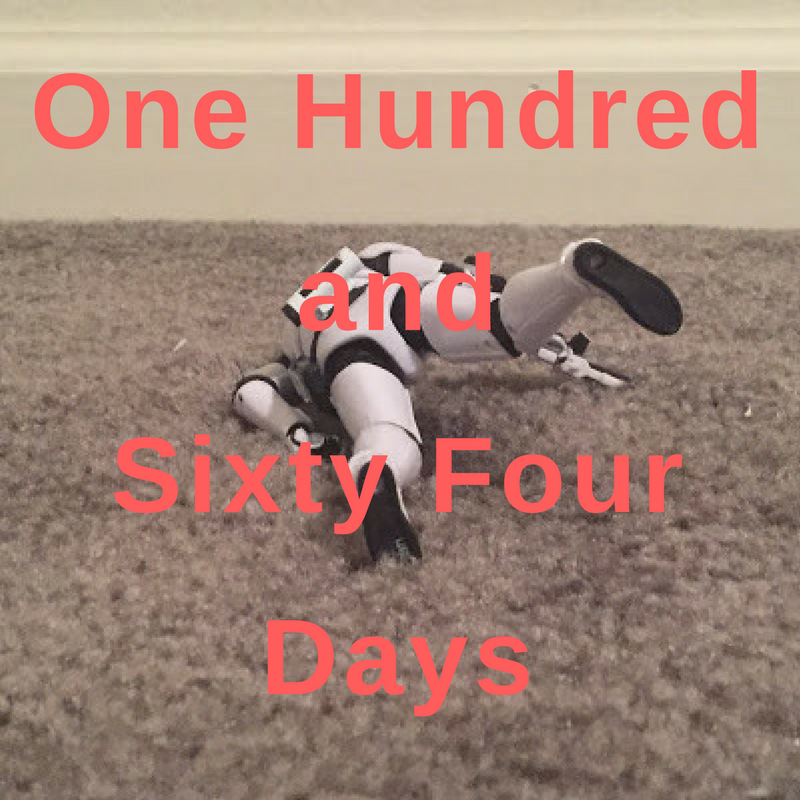What is the first rule of ensemble storytelling? For that matter, what is the only hard and fast rule of ensemble storytelling? This rule applies (for the purposes of this discussion) to superhero comics, but it applies equally well to any kind of long-form serial ensemble fiction, be it a TV drama, film series or even a sitcom.
The first rule of ensemble storytelling?
Character dynamics.
This is a big phrase, and encompasses a lot of information and a lot of disparate, equally valid approaches to storytelling mechanics. But if we're going to parse this phrase into something more applicable, I think it would be best to introduce a maxim. To wit:
Use Every Character, and Never Involve More Characters Than You Can Use In A Given Scenario
Character dynamics doesn't just mean "characterization", although that's a big part of it. More broadly, it means giving each and every character something to do, some important reason for them to be in the story, to be on panel or onscreen. If there is no reason for a character to be in the story, then he shouldn't be in the story. This is not real life: in real life, more often than not, any given event is accompanied by some degree of confusion and redundancy. In fiction this effect is just boring: who wants to read a story filled with a ton of characters, most of whom don't really do anything important at any point? Go back and flip open any random issue of The Infinity War or "The X-Cutioner's Song" and you'll see pages and pages of people standing around doing nothing much of anything. In fact, stories like these spend as much of their time filling in the blanks regarding what the people who aren't necessary for the story are actually doing while the main action of the story is occurring somewhere else.
But it's besides the point to beat up on crossovers whose only real purpose to begin with is to have all the characters in a room together for a short period, even if the circumstances required to get them all in the same room are more often than not asinine. The few really good crossovers that have been produced still follow the rule of character dynamics: even the first Crisis, perhaps the most sprawling mega-opus ever published in comics, still managed to give every significant character something to do, some reason to be there, some motivation, no matter how small their significance to the larger plot.
But on a day-to-day basis, ensemble storytelling doesn't have to be - and in fact, should not be - anywhere near as ornate. In fact, when done well, it can almost seem elementary, but given that it's still remarkable how often people writing ensemble casts still manage to fuck it up.
I mentioned Justice League: Cry For Justice before, and it is interesting to me that for all the book's myriad faults, no one (that I have seen) has really spent any time dealing with the main reason the book doesn't work: after the first issue, we still don't have any actual character dynamics. We have a line-up - that's all we do have, since it was announced something like a year ago who would be in the comic. And the first issue seems to be setting the stage for an origin roll-out, where all the characters will slowly coalesce and subsequently find their raison d'etre sometime by the sixth issue. Each character is painstakingly introduced, given a motivating setpiece (whether they need one or not!), an introduction to their background and milieu.
Here's the thing: that's all irrelevant.
One of the problems with "decompression" is that it attenuates and elongates the stories in such a manner that the generic shortcomings of the source material become glaringly obvious and much harder to forgive. In this case, James Robinson & Co, are trying to tell the story of their team's origin - but in most other cases, the origin of any given team is their most unimportant feature. It's so unimportant that the X-Men have never really even had a team origin - characters have origins, yes, and some aspects and iterations of the team and their spin-offs have origin stories. But really, all you have to know is that the X-Men were founded as a school, and the team grew over the years primarily as a school, with new teammates added and old teammates leaving in much the same way as students in real schools transfer or matriculate. Even after all these years and all these many different permutations, the books more or less always find a way to reset to this basic milieu, for really no other reason than that it is a remarkable bit of storytelling shorthand. You don't need to go to the trouble of working out some awkward origin story when you've got the school setting on which to fall back. You can dive right into the most important factor: that's right, you guessed it, character dynamics.
Cry For Justice fails not because the story is weak (although it is). Objectively, the story as given in the first issue is really not that different from any eleventy-billion other super-group origin sequences. Hell - the Justice League itself has done some variation on this story at least three times in recent memory - you know, the whole "we're not getting anything done just sitting around a big round table, we need to be more proactive and streamline this organization" schtick. The reason why this storyline occurs with such frightening predictability is that the Justice League is uniquely vulnerable to ossification and calcification, by virtue of the fact that at its most popular it is composed almost entirely of characters who are uniformly static. That is: Superman, Batman, Wonder Woman, the Flash, Green Lantern, Aquaman and even the Martian Manhunter are all not merely "known" quantities but the most known quantities in all of comics. It's not a new observation but it bears repeating in this context: the guy writing Justice League can't do an awful lot to fuck with Batman's status quo.
These things follow a fairly standard pattern. Super-teams start their run with the "Big Guns". Then the creators get tired of dealing with characters for whom a super-team is at best a secondary priority - which means, in practical terms, the creators' hands are tied as to interesting things that they can do with said characters. So secondary and tertiary characters are introduced by the creators in the hopes of "jazzing up" the series, essentially introducing foils for the more static characters in the form of properties that can be fucked over with little or no negative consequence. This is necessary because in almost all cases it is far easier to write new or underdeveloped characters about whom any number of stories can be told than, say, Superman and Batman, who can't really do anything except act like Superman or Batman. So: enter Red Tornado, Vixen, Vibe, Triathalon, the Vision, et al.
(JLA got away with bending this rule a little bit by dint of the fact that, for the entirety of Morrison's run and even into Waid and part of Kelly's runs, it was DC's de facto flagship. Justice League of America was never really DC's flagship at any other time before or since, and the proof of this can be found in the simple fact that, back in 1997, putting all seven of DC's most iconic and marketable characters together in one book for an extended period of time - and putting top creators on the series, to boot - was so novel as to be practically unheard of. That Morrison was able to reverse this traditional dynamic was nothing short of astonishing: he established primary character beats for Superman, Batman and Wonder Woman that impacted their own books for the next decade, and his versions of Kyle Rayner and Aquaman were far more interesting than the versions seen in the characters' own titles. Kurt Busiek managed something similar during his contemporaneous stint on Avengers, but the two teams are different enough in fundamental structure - or, at least, they were until Bendis' "All Star" New Avengers line-up - that direct analogies are problematic.)
Cry For Justice appears to have an interesting mix of characters - but I say "appears" because we have no idea how these characters are supposed to interact or even meet. Again: if a book with this exact same plot had been created twenty or thirty years ago, it wouldn't have been received anywhere near as poorly. The reason is that in the space of the hypothetical 1979 or 1989 first issues, all the backstory & exposition from this first issue - and, I'm assuming, from the next few issues as well - would have been handily dispatched in the first dozen pages of a very packed book. Seriously: look back any old issue of Wolfman & Perez' Teen Titans or any contemporaneous issues of X-Men or Legion of Super-Heroes. There is a reason these books were so densely packed - it wasn't simply storytelling style, it was narrative common sense. You need to devote as little amount of time as possible to the least important part of your story, and in this case, the least important parts of the story are everything that happens before the point where the team meets and bands together for future adventures. Even if this is only a mini-series, the point remains: you can't hang a book like this on something so arbitrary as a plot, because the plot behind these team books are basically arbitrary. The plot is - or should be - an innocuous a vehicle to get a good mix of characters together to start interacting dynamically. If you've got a good mix of characters, the dynamics create their own stories. Then it doesn't really matter if you're batting against Moses Magnum or the Key - the villains are window dressing.
(Again, Morrison's JLA is something of an outlier in this respect because it was so dependent on high-concept menaces to the detriment of soap-opera stuff that is traditionally the mortar that holds together any successful - or readable - team book. The first couple years of JLA are some of the most intricately plotted super-books ever written. It must have been an impossible chore to concoct so many plots that could comfortably contain seven or eight iconic [by "iconic" I mean "static"] and powerful characters. But every story had something for each character to do, and additionally, something that could only be done by each respective character - not as easy as it sounds. Sure enough by the last year or so of the book even Morrison ran out of steam, the storylines eventually devolved into standard action figure posing. Writing satisfying plot-driven action stories is maybe the hardest thing to do well, which explains why almost no-one can manage to do it correctly.)
So, is Cry For Justice a good book? I have to give it an "incomplete", as much as I wish I could simply flunk it, because it simply isn't a comic book yet. It's the first dozen pages or so of a series proposal. So far the only characters we've seen interacting are characters who we've already seen interacting ad nauseum - Green Lantern / Arrow, the two Atoms. But how do Congorilla and Starman fit into the picture? How do Supergirl and Batwoman enter the line-up? I wish I knew! But the story Robinson and Co. are telling is simply not the story they need to be telling in order to get people to want to pick up the next issue. Spend a dozen pages on exposition, put all the characters in place, and then conjure up your causus belli, tout suite. Make it the Big Bad of the first arc - or the Big Bad's herald / henchman - whatever. Get them doing something, concoct some rudimentary mystery around the menace. Most importantly, give us a taste of these characters: give us some inkling of how they react to each other, which characters have a natural affinity, which have an antipathy, who distrusts whom and who has secrets, who has what issues and who has a crush on whom.
It may seem a lot to cover in 22 pages, but look back at something like, say, Nicieza and Bagley's New Warrors #1, or the first issue of Busiek's Thunderbolts, or even more recent examples like the original Exiles. None of these books were ever gonna win an Eisner, but they did exactly what they needed to do: got you to come back for the second issue by introducing interesting characters and a compelling concept. All of these books had long, surprisingly successful runs - especially so considering they were brand-new properties filled a mixture of C-and-D-list also-rans and brand new ciphers. All of them followed the formula developed by Lee & Kirby on Fantastic Four, extrapolated by Roy Thomas on The Avengers and finally perfected by Chris Claremont on X-Men.
Which brings us back to the most important aspect of writing superhero team books: there is a successful formula, and if you stick with the formula you will almost always succeed. That is not to say you can't succeed if you break the formula - cf. JLA, but unless you're Grant Morrison that's a tricky proposition. That is also certainly not to say that following said formula is a guarantor of commercial success: one of my favorite books of the last decade was John Arcudi and Tan Eng Huat's star-crossed Doom Patrol revamp, a book that failed miserably despite being an unalloyed pleasure. Arcudi's Doom Patrol worked because he made the book almost entirely about the characters to the exclusion of most all else - a group of misfits who were not so much physical or mental freaks (like the original Doom Patrol) as simply dysfunctional human beings who bickered, fought, loved and lost. Great book, simple high concept, doomed (heh) from the inception.
You can't write team books in a decompressed format. I mean, obviously you can, but the result is stilted and unsatisfying. With so many characters vying for panel time, it is simply impractical, and the result is the worst kind of action figure storytelling: loads of people standing around waiting for their opportunity to say something, instead of the plot evolving naturally from the interpersonal dynamics. You can't have interpersonal dynamics unless you're willing to sacrifice some degree of narrative naturalism in favor of foreshortened character beats. Group books have to be dense in order for things to actually happen. Bendis finally seems to have figured out the rudiments of writing team books, to judge by Dark Avengers, of all things. That is a book that actually works, against all odds, because every character in it has an identifiable personality, a specific agenda - something they want - and the ways in which these personalities and conflicting agendas bounce against each other propels the book along quite nicely. His New Avengers is still deathly boring, but that is just proof positive of the basic point: it's hard to write a team book without recourse to the formula established above. Without the pressure of having to incorporate highly static characters such as Wolverine, Spider-Man, Iron Man, Captain America, et al, into his plots, with a line-up full of dynamic personalities, the book almost writes itself. It's dynamic.*
Which brings us back, as you might imagine, to Chris Claremont and Uncanny X-Men. The franchise's success is predicated on many things, but most important I would argue is the sense of momentum driven by decades of Claremont's dense, heavily dynamic storytelling engine. Let us not forget that when Giant-Size X-Men #1 shipped, Wolverine, Storm and Colossus were less than ciphers, they were nothing. Blank canvases on which Claremont and his collaborators could paint to their hearts content.
* EDITED to reflect that Luke Cage is not really an iconic character like the others mentioned, but he has been the team's most prominent member and basically the only member of the "New" Avengers to have any kind of personality or dramatic arc beyond their status as action figures. Bendis made Cage an A-lister by sheer force of will, despite the fact that of all the characters ever in the Marvel Universe, Power Man was perhaps the least likely candidate for Avengers chairmanship, only ahead of the Mandrill and Typeface. But, props where they're due, he resuscitated the character pretty damn successfully, considering his most memorable appearance in the entire decade of the 1990s was a team-up with Blackface Punisher.**
** Bet you forgot about Blackface Punisher.





No comments :
Post a Comment